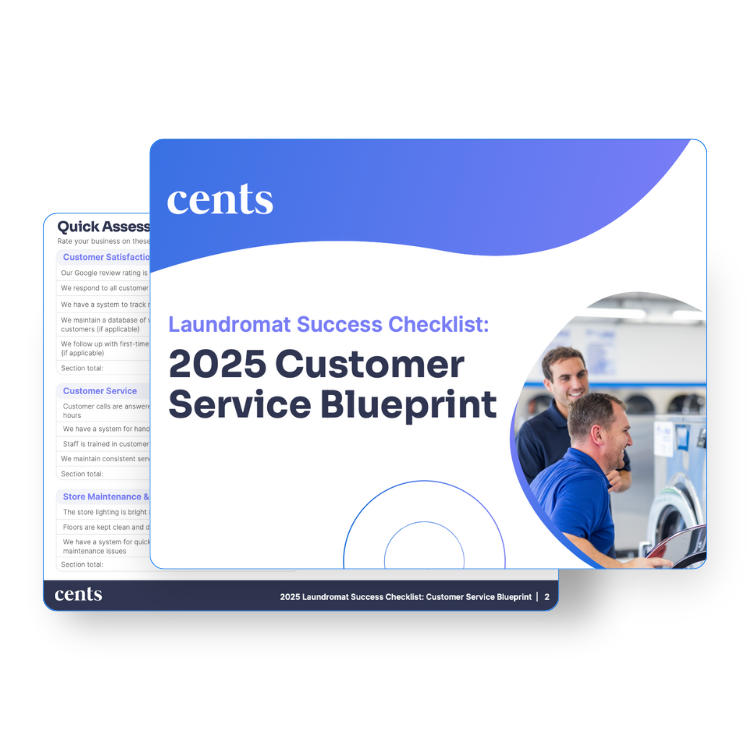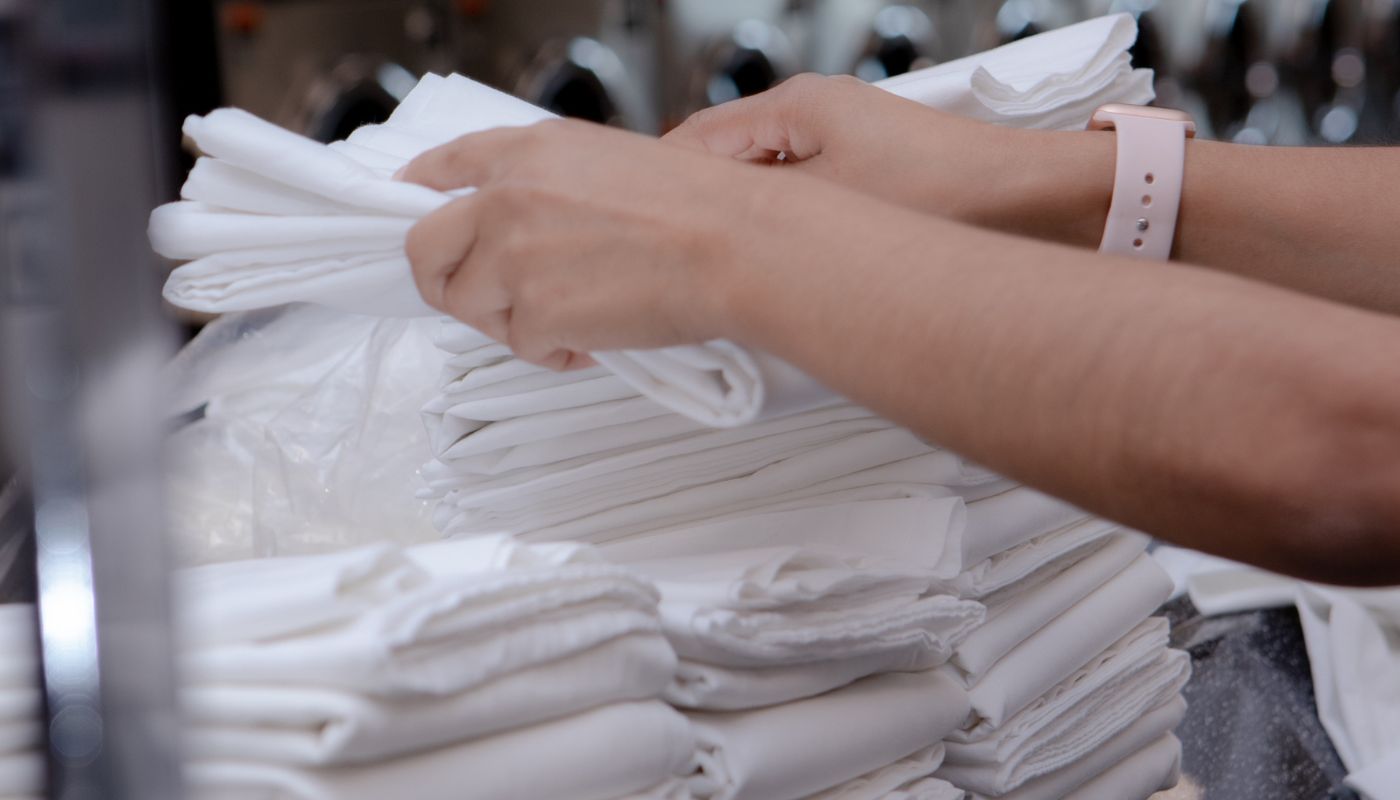The modern laundromat industry is ripe with opportunities for hungry entrepreneurs. But what makes laundromat investing so appealing?
For starters, it’s marked by consistent demand. No matter the inevitable shifts in consumer behavior or technological advancements, the basic and universal need for clean clothes remains constant. There will always be people that rely on laundromats.
The laundromat business has been a hub for innovation, even if this hasn’t been obvious to the average person. From coin-operated machines to today's card or app-based systems, from simple wash-and-fold services to value-add luxuries like organic detergent options, and commercial business opportunities—the industry has always welcomed positive change!
When you factor in the potential for diverse and profitable ancillary services, you're presented with a business model that's both multifaceted and lucrative.Whether you're a seasoned investor or a curious newcomer in the world of laundry, this guide should answer your questions.
The alluring advantages of investing in a laundromat
Owning a laundromat allows you to tap into a well-established business model with a multitude of benefits. Here we'll break down the compelling reasons that make laundromats a strong business venture:
1. Recession-resistant nature
Economic downturns have been the kryptonite of many industries. Yet, the laundromat business has historically shown remarkable resilience—even in challenging conditions. This is because clean clothing isn't a luxury; it's a fundamental need. As such, even in tough times, people prioritize this essential service.
2. Steady cash flow
Laundromats provide an essential service that generates revenue by meeting the ongoing demand for clean clothes. While success can take time, the combination of traditional coin-operated machines and modern digital payment options creates multiple income streams. With a diverse customer base—including students, families, and busy professionals—laundromats have the potential to develop strong cash flow as they establish themselves in their communities.
3. Minimal supervision required
The beauty of a laundromat is that it can largely be a self-service operation. Once set up, customers come in, use the machines, and leave—all with minimal oversight. Commonly, a laundromat can be run with 1 or 2 attendees on a part-time schedule. This autonomy presents opportunities for absentee ownership, allowing owners to manage their establishment remotely to collect passive income.
However, if you choose to add higher-end services like wash-and-fold or pickup and delivery, you may need to take a more hands-on approach to running your business.
4. High ROI potential
As inflation eats up margins in many global industries, laundromats still enjoy a promising return on investment (ROI). While the initial setup or acquisition costs might seem substantial, the long-term benefits, especially when balanced against operational costs, are greater. According to the Coin Laundry Association (CLA) 28th Annual Laundry Industry Survey, owners profit from about 35%-39% of gross revenue. Plus, with strategic upgrades and expansions, the potential for growth is even greater.
Take Florida-based Happy Bubbles for example: after upgrading their technology they were able to improve operations and triple their revenue.
5. Community impact
Laundromats are more than just utility spaces; they’re community hubs. They offer a space where locals can socialize, share stories, or simply enjoy a moment's respite. You can double down on the community-feel by offering additional services, such as community boards, small reading corners, cafés, or hosting local events.
6. Scalability
One successful laundromat can be the foundation for many more. The industry's model lends itself beautifully to scaling, whether through opening additional locations or franchising opportunities. With each new location, brand visibility increases, drawing in more customers and revenue. According to the CLA, over 40% of laundromats have 2 to 3 locations.
7. Low skills barrier
While every business has its complexities, laundromats don't require specialized knowledge to start. Basic operational training, coupled with an understanding of customer service, is sufficient for new business owners. This low barrier to entry makes it a great option for green entrepreneurs.
8. Fixed operating hours
Laundromats have the rare gift of predictability. With fixed operating hours owners can enjoy a work-life balance rare in other industries. No late-night calls, unpredictable schedules, or unexpected curveballs—just set hours that customers know and appreciate.
9. Business-to-business opportunities
Beyond individual customers, there's a world of business-to-business (B2B) potential. From partnering with local hotels and salons to offering dedicated services to other businesses, the possibilities for steady B2B revenue streams are vast. Commercial business is a great way to increase revenue in a laundromat.
10. Loyalty programs and repeat business
Happy customers often become loyal patrons. Using loyalty cards or programs, laundromats can capture a regular customer base, driving repeat business and even attracting new customers through word-of-mouth referrals.
Before you buy a laundromat, it’s important to conduct proper due diligence. This checklist will guide you through it to save you money.
The potential pitfalls of laundromat ownership
Owning a laundromat can undoubtedly be lucrative and fulfilling, but like every investment opportunity, it comes with challenges. It's important for future investors to have a total understanding of the potential pitfalls involved in laundromat ownership. Knowing these challenges helps in creating a strategic business strategy:
1. Upfront investment costs
Venturing into the laundromat business can be capital-intensive. Whether you're starting from scratch or purchasing an existing establishment, there are considerable costs involved. Initial expenses can include real estate, state-of-the-art machines, interior setup, and systems integration.
2. Maintenance and Repairs
There’s no sugar-coating it: machines break down. The daily wear and tear can result in frequent and sometimes expensive repairs. You’ll thank yourself for having a reserve fund for unexpected breakdowns. Even with regular maintenance, these machines have a finite lifespan, which means eventual replacements are inevitable.
3. Competition and market saturation
The laundromat business, in some areas, has reached a point of saturation. With numerous establishments vying for a piece of the pie, the competition is fierce. The increasing number of laundromats in specific neighborhoods can thin out profits, making differentiation and exceptional service of the utmost importance.
4. Dependence on location
Location plays a pivotal role in the success of a laundromat. An excellent spot in a high foot traffic, urban neighborhood can guarantee steady patronage, while a remote or overcrowded area might lead to business stagnation. Keep in mind, neighborhood dynamics can change over time. What seems like a thriving area today might not be so in the future, especially with urban development plans and demographic shifts.
5. Water and energy costs
Between the vast water and energy it takes to run a laundromat, utility bills can get pretty pricey. And as the world moves towards sustainability, there's increasing pressure on businesses to adopt green practices, which might mean additional investments in eco-friendly machines and systems.
However, there are ways to save on laundromat utility costs, mostly relating to the efficiency of the equipment you purchase.
6. Changing technology and consumer preferences
The rise of on-demand services and app-based laundry solutions pose a challenge to those who are stuck in the past. Consumers today are tech-savvy and seek convenience. Staying updated with the latest technologies and adjusting business models to align with consumer preferences is essential.
7. Vandalism and theft
It’s important to maximize your laundromat’s security. Some areas, unfortunately, see higher rates of petty crimes. The open nature of laundromats can make them susceptible to vandalism and theft, which means additional expenses in security systems and possibly higher insurance premiums.
8. Seasonal fluctuations
While laundry is a perennial need, certain seasons, especially warmer ones, might see a drop in heavy laundry loads, affecting the monthly revenue stream.
9. Regulations and licenses
Like any business, laundromats need to adhere to local and state regulations. Regularly updating licenses, adhering to health and safety standards, and keeping in line with wastewater treatment regulations can sometimes be a challenging endeavor.
10. Staff management
If you opt for a more hands-on laundromat model with additional services, staff management becomes a critical component. From hiring the right people to training them on a consistent quality of service, human resource management can be a demanding aspect of the business.
Tips to maximize the pros and mitigate the cons
While there are notable risks you assume when investing in a laundromat, that’s the nature of any business. There are plenty of reliable strategies to capitalize on laundromat business advantages while navigating the challenges! With the right tactics, you can turn your laundromat into the community staple and lucrative venture it has the potential to be.
Conduct comprehensive market research
Your very first step to starting a laundry business should be familiarizing yourself with the local landscape. Understanding the demographics, needs, and preferences of your target market, as well as gauging the competition, will help you make informed decisions regarding location, services, and pricing. Utilizing tools such as demographic studies, market surveys, and competitor analysis will be invaluable. Even in areas with a few laundromats, if there’s an unmet need, there’s an opportunity waiting to be seized. Be sure to check out online resources to help you get a better picture of the market. You don’t have to do all the research on your own!
Invest in regular maintenance
A smooth-running laundromat largely depends on well-maintained machines. It’s cheaper, in the long run, to invest in routine maintenance than to deal with frequent, costly breakdowns. Build relationships with reputable repair services, and consider setting aside a dedicated budget for machine upkeep. This proactive approach will save you headaches, money, and the trust of your clientele.
Stay up-to-date with industry trends
The laundry industry, though stable, is not static. With the emergence of app-based laundry services, eco-friendly machines, and other technological innovations, staying updated is essential. Attending industry conferences, workshops, and joining laundromat owner associations will help keep your finger on the pulse of the industry. By being on the forefront of trends, you can ensure your laundromat remains competitive.
Diversify services
Convenience is king. By offering value-added services such as dry cleaning, wash-and-fold, or even pickup and delivery, you can cater to a broader audience and increase your revenue streams. Think outside the box and form partnerships with local businesses. Collaborative promotions or deals can mutually benefit both parties, strengthen your community ties, and bring in brand new patrons.
Seek expert advice
Even if you're a seasoned entrepreneur, the laundromat business can be complex. Engaging with industry consultants or seeking advice from veteran laundromat owners can provide insights that are worth their weight in gold. Whether it’s finding the ideal location, sourcing machines, or setting up operational processes, a little expert guidance can go a long way. Also, check out some laundromat owner case studies to learn what has worked for others to avoid as much trial and error as you can.
Comparing the pros and cons
When considering a business investment like this, you have to weigh the pros and cons.
This side-by-side comparison gives a balanced perspective of the pros and cons of owning a laundromat, allowing you to gauge whether this venture aligns with your business plans and goals:
Pros |
Cons
|
|
Steady cash flow: Laundromats are known for their consistent revenue, with 90% of patrons becoming repeat customers. |
Upfront investment costs: Entering the laundromat industry requires significant initial investments, which can be daunting if you don’t have the start-up capital. Luckily, there are solutions to this. |
|
Recession-resistant nature: Laundromats have historically been stable during economic downturns, making them a safer bet during uncertain times. In fact, the number of laundromats in the U.S. grew during the pandemic . |
B2B Opportunities: Partnerships with local businesses, like hotels or salons, can lead to steady B2B revenue. |
|
Minimal supervision required: The self-service nature of many laundromats allows for reduced hands-on management, and even potential for absentee ownership. Nearly 40% of laundromat owners consider it a part-time job. |
Staff management: If you opt for additional services, managing staff for cleaning, maintenance, or customer service can become challenging. |
|
High ROI potential: With proper management and strategic decisions, the return on investment can be handsome over time. |
Maintenance and repairs: Regular upkeep is essential, and machine malfunctions can lead to unexpected expenses. |
|
Fixed operating hours: Defined business hours provide predictability, aiding in work-life balance for owners. |
Dependence on location: The success of a laundromat hinges significantly on its location. A wrong choice can severely impact patronage and profits. |
|
Low Skills Barrier: Entrepreneurs can enter the business without needing specialized skills or extensive training. |
Regulations and Licenses: Navigating health, safety, and business regulations, along with managing licenses, can be cumbersome. |
|
Community Impact: Laundromats have always been community hubs. Modern establishments can offer added services to further cement their role in the neighborhood. |
Market Saturation: With the business being evidently lucrative, there's a risk of saturation, and standing out becomes all the more important. |
|
B2B Opportunities: Partnerships with local businesses, like hotels or salons, can lead to steady B2B revenue. |
Changing Technology and Consumer Preferences: The industry is evolving, and keeping up with technological advances and consumer trends is imperative. |
Is laundromat investing right for you?

When considering laundromat ownership, you have to consider all the challenges. Keep in mind that a business of any kind is bound to come with its own unique advantages and disadvantages.
From an operational standpoint, laundromats—with their potential for self-service and fixed hours—can offer more predictable routines than many other businesses. Yet, they require vigilance in areas like maintenance, updates, and customer service to stay competitive.
The laundromat industry has come a long way from its inception. With tech-savvy operations, eco-friendly machines, and value-added services, they're reshaping customer expectations by providing needed services to a wider spectrum of customers than ever before.
Future predictions
Understanding the trajectory of the laundromat business is vital. Over the years, we've seen many shifts in the pros and cons of investing in this industry. For example, while earlier laundromats might have primarily catered to local communities, today's laundromats have the potential to serve a broader demographic, including local businesses. With these expansions come new challenges, such as increased competition, but the revenue benefits are very promising.
The next 5-10 years for the laundromat industry seem poised for growth and innovation. The global dry-cleaning and laundry services market size was valued at $69.7 billion USD in 2024. Considering the urbanization trend and the surge in apartment living without in-unit washers or dryers, laundromats have an increasingly prominent role to play in coming years.
Is owning a laundromat worth it?
Investing in a laundromat is a big decision, influenced by personal preferences, risk tolerance, business goals, the predictable laundromat business pros and cons, and market insights. The industry's stability, combined with the potential for growth and community impact, makes it an exciting proposition. However, it demands due diligence, an understanding of the evolving landscape, and the agility to adapt. It’s important for potential investors to arm themselves with knowledge, leveraging resources like in-depth guides and insights from industry veterans.
Before you buy a laundromat, it’s important to conduct proper due diligence. This checklist will guide you through it to save you money.
.png)

-3.png)







![Is a Laundromat a Good Investment? [Complete Investor's Analysis]](https://www.trycents.com/hubfs/doing-laundry-in-nyc-laundromat-header.jpg)

